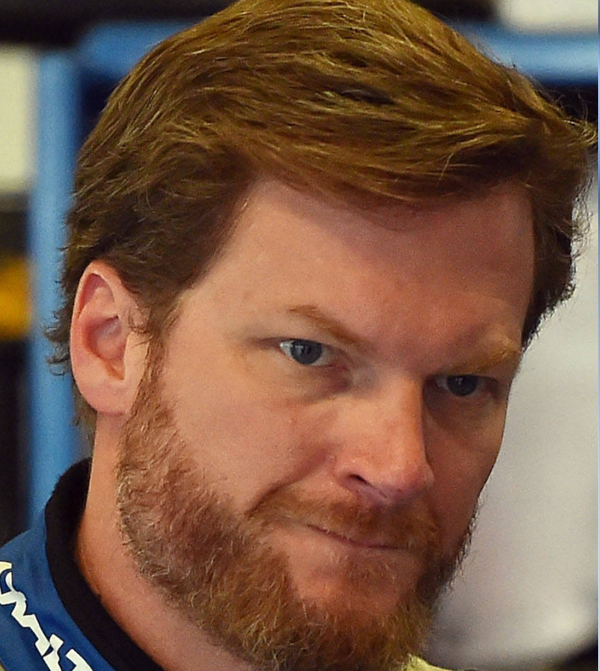
via Imago
Dale Earnhardt Jr and Kasey Kahne | Image Credits: Imago

via Imago
Dale Earnhardt Jr and Kasey Kahne | Image Credits: Imago
The year is 2005. Dale Earnhardt Jr. is running winless in the season and has a 20-race winless streak. But, come Chicagoland, he delivers one of his most iconic performances. He managed to score his lone win at Chicagoland Speedway using the high line. As the laps wound down, Earnhardt Jr. hugged the outside wall with surgical precision, carrying momentum through the corners while his competitors struggled to keep pace. It was a masterclass in bravery and finesse, a moment that solidified his reputation as one of NASCAR’s greatest high-line drivers.
Fast forward two decades, and Earnhardt Jr. finds himself reflecting on the evolution of the very technique he once perfected. Enter Kyle Larson, a driver who has not only embraced the high line but redefined it entirely. Watching Larson’s audacious moves at the same Chicagoland track early in the HMS driver’s career, Earnhardt Jr. was forced to confront a humbling truth: the next generation had taken his signature style and pushed it beyond what he thought possible.
ADVERTISEMENT
Article continues below this ad
Dale Earnhardt Jr. reflects on Kyle Larson’s mastery
During the NASCAR Cup Series race on March 23, 2025, at Homestead-Miami, Larson showcased his remarkable ability to navigate the high line with unparalleled precision. He forced his teammate, Alex Bowman, to commit an error with just six laps remaining, ultimately securing his 30th career victory. What made this win particularly noteworthy was Larson’s adeptness at running perilously close to the wall, a skill that has led to him holding the record for most laps led at Homestead-Miami Speedway (645).
Dale Earnhardt Jr. reflected on the time he ran against Larson as they duked it out on the high line, and that’s when he realized how much better Larson was. “Before Kyle Larson got here, I felt I was one of the three best running the top. I would go up there and run the wall at Chicago or Atlanta… I’d be motoring up on people. Then Kyle Larson comes onto the scene and we’re racing at Chicago. I’m running the top, [and] so is he. Nobody’s running higher than both of us. He’s beating me, and he’s doing one thing different than I am.” This is when Junior realized the Elk Grove native was cut from a different cloth.
Dale Jr. explained that at tracks like Chicagoland, the outside wall isn’t perfectly straight—it shifts outward slightly, creating a unique challenge. Most drivers steered away, but not Larson. “I couldn’t believe it ’cause it just didn’t make any freaking sense. When you get to the end of the front straightaway at Chicago, the outside wall goes out about half a car length and then it wraps around the corner. I didn’t think to follow the wall… He [Larson] followed it,” Dale Jr. said. That tiny adjustment allows Larson to carry just a bit more speed exiting the turn than his competitors, turning a subtle detail into a major advantage.
In the small career overlap that Dale Jr. had with Kyle Larson, they raced at Chicagoland twice, and both times, it was Kyle Larson who came out ahead of Jr. In Larson’s rookie year in 2014, he led 20 laps at Chicagoland and finished third, as Dale Jr. finished 11th. Then, in 2015, Larson once again notched up a top-10 finish, coming 7th, while Jr. ended the race in 12th. Jr. continued, “I watched him do that about two laps and I thought, ‘Damn man. He’s dotting i’s and crossing t’s, and he’s doing all the details.’ Like I’m running the top, but this man’s not leaving no stone unturned.”
There’s running the top, and then there’s the Larson Line. 🆙
A new episode of the @DaleJr Download just dropped! 🎙️
Apple: https://t.co/hCBW2kRRKz
Spotify: https://t.co/YvXiNWvwDW
YouTube: https://t.co/kS1JixrJx1 pic.twitter.com/OpNm7mBTzs— Dirty Mo Media (@DirtyMoMedia) March 25, 2025
What’s your perspective on:
Has Kyle Larson truly surpassed Dale Jr. as the high-line king, or is it just hype?
Have an interesting take?
Even at Homestead last Sunday, Larson was often just inches away without any compromise on speed, allowing him to harness the air dynamics that come into play at the track. As Larson himself explained, “The more you can commit on entry to being next to the wall, with speed, I think, is important.” While Larson made it look easy, drivers need a deep understanding of aerodynamics and car control to execute the high line effectively.
While Jr. had once been regarded as the best at running the top, Larson’s precision had redefined what was possible. For NASCAR fans, Larson’s mastery of the high line isn’t just exciting to watch. It’s a reminder that even the most established techniques can be taken to new heights. With his Homestead win, Larson cemented his place as the modern king of the high groove. He has left everyone (Earnhardt Jr. included) wondering just how much further he can push the limits.
Trending
ADVERTISEMENT
Article continues below this ad
Larson’s upcoming challenge at Martinsville Speedway
Kyle Larson is set to tackle Martinsville Speedway in the next NASCAR Cup Series race. This track presents a stark contrast to venues like Homestead-Miami and Chicagoland. While Homestead-Miami features a 1.5-mile oval with progressive banking of 18-20 degrees, facilitating high-speed, multi-groove racing, Martinsville is a 0.526-mile short track with minimal banking. Its tight corners and flat straights demand precise braking and acceleration, emphasizing mechanical grip over aerodynamic performance.
Larson’s history at Martinsville shows both promise and struggle. He earned his first win at the track in 2023 during the NOCO 400. Here, strategic pit calls and aggressive driving helped him secure victory despite his initial doubts about succeeding there. Notably, he leveraged a late two-tire pit strategy to gain track position and outmaneuver Joey Logano in the closing lap. “I had never ever thought that I would win here at Martinsville. This place has been so tough on me,” Larson admitted after the race.
Despite his past challenges, Larson has shown steady improvement at Martinsville, with one win, two poles, six top-five finishes, and eight top-10 finishes across 20 starts. His average finish of 16.1 suggests room for growth. But his recent performances indicate he’s capable of contending for another victory.
ADVERTISEMENT
Article continues below this ad
To achieve a strong result in the upcoming race, Larson will need to leverage his team’s strategic acumen and his own adaptability. Mastering Martinsville’s unique challenges, such as managing tire wear and executing timely pit strategies, will be crucial. Given his recent form and the lessons learned from past races, Larson has the potential to excel at the ‘Paperclip‘ and further solidify his standing in the NASCAR Cup Series. Do you think Larson will go back-to-back at Martinsville? Let us know in the comments!
ADVERTISEMENT
ADVERTISEMENT
ADVERTISEMENT
ADVERTISEMENT


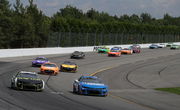
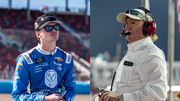

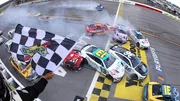
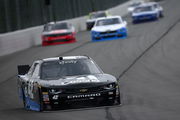
Has Kyle Larson truly surpassed Dale Jr. as the high-line king, or is it just hype?